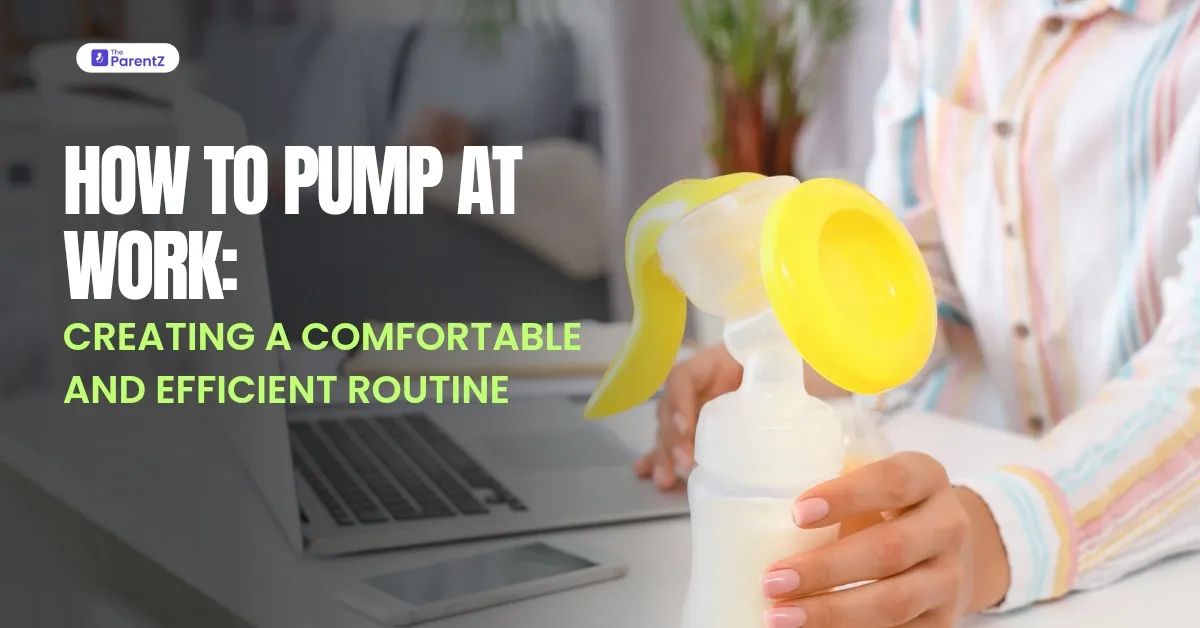Returning to work while breastfeeding can be challenging, but with the right approach, it's definitely manageable. Creating a comfortable and efficient pumping routine is key to maintaining your milk supply and ensuring a smooth transition back to work. Here's a step-by-step guide to help you set up a routine that works for you.
Step 1: Find a Private Pumping Space
The first step in creating your pumping routine is to identify a private space at work where you can express milk comfortably. Ideally, this should be a room that can be locked to ensure privacy and is free from interruptions. If your workplace doesn't have a dedicated lactation room, consider using an office, file room, or storage closet as a temporary solution. Here are some tips for converting these spaces:
- Office File Room or Storage Closet: If the door doesn't lock, hang a sign outside when you're pumping or ask to have a lock installed. This will help maintain your privacy and ensure you're not disturbed.
- Cubicle: Use a shower curtain rod, wooden dowel, or spring clamps to hang a large curtain around your cubicle when you need to pump. This can create a makeshift private space.
- Room Dividers or Partitions: If there are no other options, consider using room dividers or partitions to create a quick pump room. Even a pop-up utility or shower tent can work if needed.
Step 2: Plan Your Pumping Schedule
Once you have your space, it's time to plan your pumping schedule. The frequency of pumping depends on your baby's feeding schedule at home. Generally, you should pump every 2 to 3 hours if your baby is under 6 months old and every 3 to 4 hours if they're older. Here's a typical schedule:
| Time | Session Length | Notes |
| 7 a.m. | Breastfeed at home | Morning feeding |
| 10 a.m. | Pump at work | Midmorning break |
| 12:00 – 12:30 p.m. | Pump at work | Lunch break |
| 3 - 4 p.m. | Pump at work | Afternoon break |
| 5:30 – 6:30 p.m. | Breastfeed at home | Evening feeding |
Each pumping session typically takes about 20 to 25 minutes with a double electric pump, including setup, pumping, and cleanup. Make sure to factor in time to get to and from the pumping space and wash your hands and equipment.
Step 3: Choose the Right Pumping Equipment
Investing in a good quality breast pump is crucial for efficient pumping. Here are some tips:
- Double Electric Pump: This is the most efficient type for work, allowing you to pump both breasts simultaneously, which can increase milk output by nearly 20%.
- Hands-Free Pumps: Consider wearable pumps for added convenience. They allow you to multitask while pumping and are discreet.
- Properly Fitted Flanges: Ensure your pump flanges fit correctly to avoid discomfort and ensure efficient milk expression.
Step 4: Pack Your Pumping Bag
To make your pumping sessions smooth, pack everything you need in a convenient bag:
- Breast Pump and Parts: Include flanges, valves, tubing, and membranes.
- Milk Storage Products: Bring bottles or bags to store milk.
- Cleaning Supplies: Pack dish soap, a cleaning brush, and drying towels.
- Comfort Items: Include a hands-free pumping bra, extra breast pads, and a scarf for warmth.
Step 5: Stay Comfortable and Hydrated
Maintaining your comfort and hydration is essential for successful pumping:
- Comfortable Chair: Ensure your pumping space has a comfortable chair with good back support.
- Snacks and Water: Keep healthy snacks and a water bottle nearby to stay energized and hydrated.
- Relaxation Techniques: Use deep breathing exercises or visual aids like pictures of your baby to help with the letdown.
Step 6: Communicate with Your Employer
Open communication with your employer is vital. Discuss your needs and ensure they understand your pumping schedule and requirements. This will help create a supportive work environment.
Step 7: Adjust and Adapt
Your pumping routine might need adjustments over time. Be flexible and willing to change your schedule or setup as needed to maintain your milk supply and comfort.
For more guidance on preparing for your return to work, check out articles like "How to Prepare for Going Back to Work as a Breastfeeding Mom."
Conclusion
Creating a sustainable pumping routine at work takes practice, but with preparation and support, it can become a manageable part of the workday. By following these steps, you can create a comfortable and efficient pumping routine that works for you and your baby.








Be the first one to comment on this story.